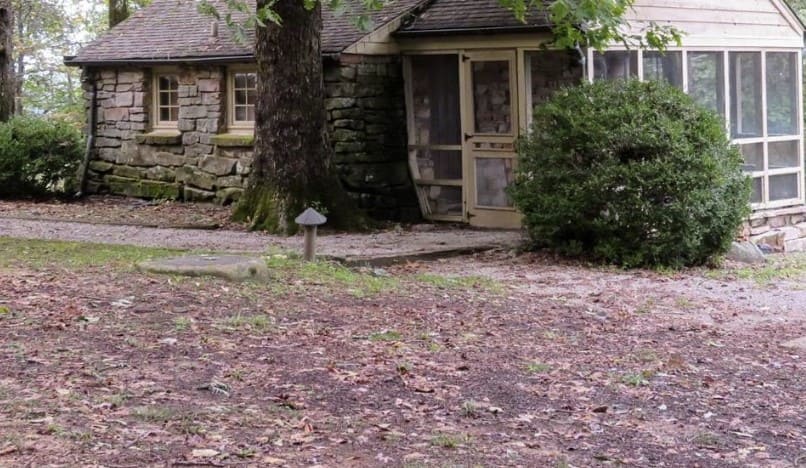The right time to apply a pre-emergent herbicide in Alabama is right before the first frost. But you should also consider other factors, as explained here.

Most lawn weeds in Alabama, just like many others, are summer and winter annual plants, meaning that they sprout once a year and cause widespread infestation. With a properly timed application, you can avoid a weeds invasion altogether.
The best time to apply a pre-emergent weed killer in Alabama is right before the first frost appears. At this time, there is less sunlight, which is essential for weeds’ growth, so they are already weaker.
Another benefit of applying pre-emergent during the first frost is the herbicide won’t wash away, unlike during heavy rainfall.
When to apply pre-emergent weed killer in Alabama
As previously mentioned, your timing is dependent on the region you live in, the weed you are dealing with, and the prevailing season.
The timing varies between March and August for the different regions and seasons.
1. Applying pre-emergent during spring

For the north and central regions of Alabama, application of spring pre-emergent is best done around the middle of February towards the end. Make sure to use a weed killer that also controls crabgrass.
In the southern regions, weed killers should be applied in early February. This is because, in March, ornamental grass species like Zoysia and St Augustine start to come out of dormancy and sprout again.
If the herbicide is still present in the soil, it could damage them.
Because these herbicides are non-selective, the early application gives the weed killer time to lose potency before the ornamental grass sprouts.
2. Applying pre-emergent in the fall

Fall is the best time to apply pre-emergent weed killer. Ornamental plants are no longer sprouting; the weed seeds are not fully formed yet. The best time should be two weeks before sprouting has occurred.
In northern regions of Alabama, apply pre-emergent in the first two weeks of October, just as the temperatures start dropping.
In the central regions, it is best to apply is towards the end of September, and in the southern regions, the best time is also in October.
Why you should apply pre-emergent before the first frost
Pre-emergent weed killer attacks the roots and interrupts a plant’s growth rather than killing it.
Because of this, waiting until the spring or summer to apply pre-emergent poses a great risk. By then, they will probably have matured and produced seeds, which fall to the ground and take root.
If this is the case, you should consider a post-emergent, as pre-emergent will be ineffective. You can alternatively try pulling, although it can be tiresome and time-consuming.
If you decide to pull, make sure to get proper gloves, especially when dealing with thorny weeds.

Carefully observe seasonal changes, when the temperatures rise in spring and drop in fall, so you can know for sure what month is best to put down pre-emergent.
It also helps to ensure you are actually killing weeds and not just damaging soil and other plants.
Note that different sections or regions of Alabama experience slightly different climates.
For example, in the north and central regions, the spring application should be timed around the middle of February towards the end.
On the other hand, the best time to apply fall pre-emergent in the southern part is around the middle of September, approaching the end.
In addition to proper timing, make sure you are using appropriate products based on what kind of soil and grass you have on your lawn.
Some weed killers are very tough and will damage your plants. For example, you cannot use the same weed killer on crabgrass and bluegrass, as bluegrass is more sensitive.
Why should I pay attention to timing?
Yes, you can put down pre-emergent too early. Pre-emergent weed killers act by forming a barrier in the soil that stops the seedlings from emerging above the surface.
When the weed sits in the soil for an extended period, it starts to lose its potency. If applied too early, it will be less ineffective by the time the weeds are sprouting.
This is why applying it one to four weeks before sprouting is important. Avoid being any earlier than a month.
Another thing to do before you apply pre-emergent is to make sure that your lawn is properly prepped. Weed killer needs to penetrate the soil for it to be effective.
For this reason, you must make sure than any debris that could be a potential barrier has been cleared.
Unfortunately, this means that if your lawn grass has grown nice and thick to anything more than ½ an inch, you will have to get rid of it.
On the brighter side, your grass will grow back stronger and healthier if you do the process correctly.
How to care for your lawn after applying pre-emergent

The first thing you need to do after applying pre-emergent is to water your lawn. Watering enables the weed killer to seep into the soil deep enough to where it needs to be.
About ½ an inch of precipitation within the first 21 days of application is ideal for best results.
An alternative that makes life easier for many gardeners is using weed and feed products, which are much easier to time.
Weed and feed products are basically a mixture of weed killer and fertilizer. It acts by killing lawn weeds and simultaneously maintaining your lawn’s health.

IW’s Chief Editor and a lover of green spaces.